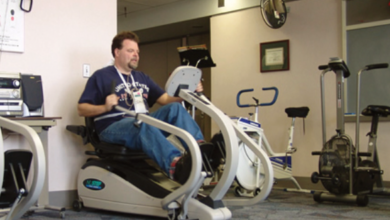The Benefits of ultrasound of the Breast: A Comprehensive Guide

Are you concerned about breast health and want to ensure early detection of any potential issues? Look no further than ultrasound of the breast. This non-invasive and painless imaging technique offers a comprehensive look at your breast tissue, providing numerous benefits for early detection and peace of mind. In this guide, we’ll explore all the ways that ultrasound can benefit your breast health, from detecting cancer to identifying cysts and other abnormalities. So grab a cup of tea (or coffee!) and read on for everything you need to know about the benefits of ultrasound of the breast.
What is ultrasound of the breast?
Mammograms are the gold standard for breast cancer screening, but they have their limitations. Ultrasound of the breast, also called sonography, is an imaging modality that can supplement mammography, especially in women with dense breasts.
Ultrasound uses high-frequency sound waves to create images of the inside of the body. Unlike X-rays, ultrasound waves are harmless and do not ionize radiation. The image produced by ultrasound is a cross-sectional view of the tissue it travels through.
In breast ultrasound, a transducer (probe) is placed directly on the skin over the breast. The probe emits sound waves that bounce off structures in the breast and are translated into images on a computer screen.
Breast ultrasound can be used to evaluate a lump that has been found by physical examination or mammography. It can also be used as a screening tool in women with dense breasts who are at increased risk for breast cancer.
When used in conjunction with mammography, ultrasound of the breast can help improve cancer detection rates while minimizing false-positive results (biopsies of benign lesions).
How is ultrasound of the breast performed?
An ultrasound of the breast is a test that uses sound waves to create an image of the inside of the breast. It is used to check for abnormalities such as lumps, cysts, or other growths.
The test is performed by a technologist who will place a small device called a transducer against your skin. The transducer emits sound waves that bounce off structures inside your body and are then converted into images on a computer screen.
Ultrasound is safe and does not use ionizing radiation (such as X-rays). Because it does not use radiation, it can be used to image pregnant women and young children.
The test usually takes less than 30 minutes. You do not need to prepare for an ultrasound of the breast.
What are the benefits of ultrasound of the breast?
Ultrasound of the breast has many potential benefits. It is a non-invasive, safe, and effective way to screen for breast cancer and other abnormalities. Additionally, ultrasound does not expose the patient to radiation, which is a major advantage over other imaging modalities such as mammography.
Ultrasound can be used to image both dense and fatty tissues, making it an ideal tool for evaluating density changes in the breasts. Additionally, ultrasound can be used to image the lymph nodes and blood vessels around the breast, which can be helpful in identifying early signs of cancer.
Another potential benefit of ultrasound is that it can be used to guide biopsies and other procedures. This is especially useful in cases where the abnormality is small or difficult to locate. Ultrasound can also help assess whether a mass is solid or cystic (fluid-filled), which can help determine whether it is benign or malignant.
Are there any risks associated with ultrasound of the breast?
There are no known risks associated with ultrasound of the breast. However, as with any medical procedure, there is a small chance of complications. These may include but are not limited to:
- bruising or bleeding at the site of the needle insertion
- infection
- hematoma (a collection of blood outside of a blood vessel)
- seroma (a collection of clear fluids outside of a blood vessel)
When should I have ultrasound of the breast performed?
Ultrasound of the breast is most often performed to evaluate a lump that can’t be felt during a physical exam or to assess abnormalities seen on a mammogram. It may also be used to guide needle biopsy of a suspicious area.
Ultrasound is generally not recommended for routine screening, but it may be an option for women with dense breasts who can’t have an MRI or whose breast cancer risk is higher than average.
Conclusion
We hope this comprehensive guide has helped you understand the benefits of ultrasound of the breast and how they can help improve your health. Ultrasound is a safe, non-invasive method for diagnosing breast issues that can be done quickly and easily with minimal risk. Whether you are experiencing specific symptoms or just want to be proactive about maintaining your good health, an ultrasound scan may be beneficial for you. Talk to your doctor today about scheduling an appointment for an ultrasound so that you can take charge of your wellbeing.




